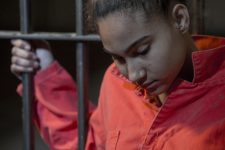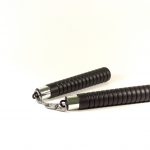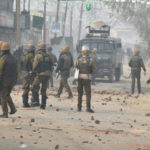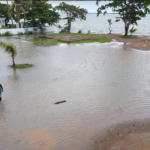Institutional Abuse of Girls in Australian Detention Centres

A report into Western Australia’s Banksia Hill youth detention centre released last month revealed that a number of girls being detained at the facility were “abruptly moved” from the female accommodation precinct and placed in the male-only Harding unit.
This arrangement led the female population of Banksia Hill to become unstable and incidents of self-harm increased.
In the three and a half month period starting in mid-December last year, there were 78 incidents involving young women whilst being detained in the male unit, whereas in the six months prior there were only 58 in the female Yeeda unit.
There were no separate observation cells for female detainees in the Harding unit, so they were placed in cells next to the boys. Temporary walls were erected to prevent visual interaction between the young men and women, but they were still able to hear one another.
The situation distressed the girls and had the potential to create trauma. It became so dire for one girl who’d been in her cell for 72 hours that staff had to remove her after finding her soaked in her own urine.
At the hands of adults
The systemic abuse rampant in Australian youth detention centres has become well-known, after the revelations about Don Dale emerged last year. But often, the reported incidents focus on boys, and young female detainees remain the hidden victims of this broken system.
Amnesty International released over one thousand pages documenting the abuse and mistreatment of children in Queensland’s youth detention centres in August last year.
The documented incidents included a girl in a pool being approached by a guard holding an aggressive, un-muzzled dog on a leash. And young women being asked to lift their breasts during searches, even though such practices are prohibited in adult prisons.
The human rights organisation is currently running an online petition calling on the federal government to stop the abuse of girls in detention. Amnesty states that along with inappropriate detention conditions, the organisation has seen reports of strip searches and sexual abuse.
Indigenous girls pay the price
And with the glaring overrepresentation of Indigenous people in Australia’s detention centres, it’s Aboriginal and Torres Strait Islander girls that are the main victims of this misguided and entrenched mistreatment.
In June last year, First Nations youth made up 55 percent of the population in youth detention centres around the country, according to Australian Institute of Health and Welfare figures. In the Northern Territory, 94 percent of youths being detained in 2015 were Indigenous.
During the year 2010-11, Indigenous young women aged between 10 and 17 were 15 times more likely to be under community-based supervision, than non-Indigenous young women. And they were almost 45 times more likely to be held in detention.
This is despite the 2016 Census figures outlining that Aboriginal and Torres Strait Islander people account for only 2.8 percent of the overall population in Australia.
Racism inherent in the system
“The criminal justice system at all levels discriminates against young Indigenous women,” said Tammy Solonec, Indigenous rights manager at Amnesty International Australia.
This is “from policing practices, to laws that criminalise poverty, to sentencing and bail policies that indirectly discriminate against Indigenous women,” she continued, and pointed to a report that details “Indigenous women are more likely to be arrested and charged,” than non-Indigenous women.
Not only are these young women subjected to abuse in the system, Ms Solonec said, but “evidence suggests many girls in youth prisons across Australia, in particular Aboriginal and Torres Strait Islander girls, are victims of violence, abuse and disadvantage.”
And according to Ms Solonec, Indigenous girls and young women involved in the justice system “are more likely to have a history of childhood abuse or neglect, mental health issues and experience of self-harm or attempted suicide,” and this is “due to the legacy of invasion and colonisation.”
A state-sanctioned medieval system
“The problems facing Indigenous girls in youth justice are entrenched and systemic,” Ms Solonec told Sydney Criminal Lawyers®. And the “culture of abuse” that runs through the youth justice system has remained secret for years, “through successive governments.”
One of the major issues the human rights campaigner points to is that youth justice officers have no training in “working with traumatised children or children suffering from mental health or cognitive problems.”
Indeed, reports given to the Royal Commission into the Protection and Detention of Children in the Northern Territory by former Don Dale youth detention centre staff reveal that those working within these facilities engage in over sexualised and disparaging behaviour.
Indigenous children made up 89 percent of the population at Townsville’s Cleveland youth detention on an average day in 2015. And at this facility, staff engaged in hog-tying children – handcuffing their hands and ankles – so that they could more easily sedate them, an independent review found.
Ms Solonec noted that three oversight bodies were aware of this method, but allowed it to continue for many years. However, she said that if independent inspectors had “been given regular access, they could have reported on and called for an end to this horrendous practice.”
An Indigenous approach is needed
Recent independent reviews of youth detention centres in Western Australia, Victoria and Queensland all recommend governments implement tailored support and services for girls in detention.
As far as Ms Solonec is concerned, Aboriginal and Torres Strait Islander communities have the answers for youths involved with the justice system. “There are many Indigenous-led prevention, diversion and rehabilitation programs that can have a huge impact on girls’ lives,” she said.
These include the Young Luv prevention program for Aboriginal girls run by the Aboriginal Family Violence Prevention and Legal Service Victoria. It “creates a safe place for women and girls to draw on cultural strength to build resilience and coping strategies,” Ms Solonec explained.
And another is the Deadly Sista Girlz program in Western Australia, which delivers strong First Nations role models to help girls build identity. It’s run by the Wirrpanda Foundation.
These children have rights
The United Nations Convention on the Rights of the Child was adopted by the UN General Assembly in 1989 and ratified by Australia the following year. It sets out fundamental principles that must be reflected upon when incarcerating children.
Article 37 states that “no child shall be subjected to torture or other cruel, inhuman or degrading treatment or punishment.” This section also outlines that “the arrest, detention or imprisonment of a child… shall be used only as a measure of last resort.”
Similarly, when the Royal Commission into Aboriginal deaths in custody delivered its findings in 1991, it recommended imprisonment should be utilised as a last resort sanction.
And yet the Australian government prefers to sign the international treaties and carry out the inquiries, whilst turning a blind eye to their reason. And in the meantime, it continues to throw young First Nations women into prison and leave them to the whims of the untrained casual staff.







